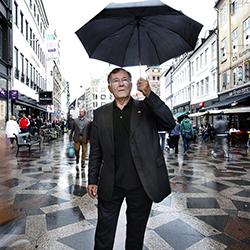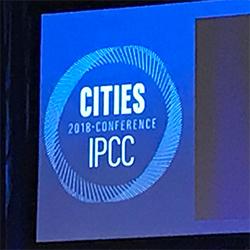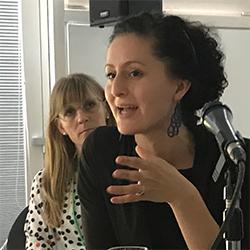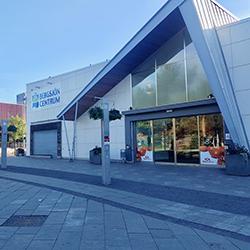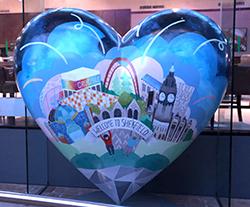Annual Lecturer Jan Gehl puts people first
Mistra Urban Futures’ Annual Lecture 2018 was given by Founder & Senior Advisor of Gehl Architects, Professor and Architect MAA, Jan Gehl. With over 40 years of experience of working with liveable cities and putting people first in city planning, the legendary architect filled Chalmers largest auditorium on December 5th.
Before Jan Gehl enters the stage, he asks with a smile “Who are all these people here to listen to?”. There is an excitement in the air and someone in the audience tweets; “If anyone wonders where all of Gothenburg’s planners and architects are right now, the answer is Jan Gehl’s entertaining and clever lecture.”
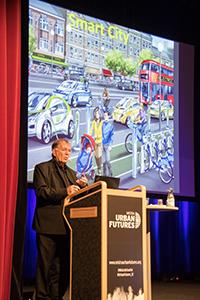
Cities for the future, there is clearly some confusion here! Jan Gehl starts off the lecture with several images how the future is represented. Google “future cities” and you will get the message. There is a hype about automated cars and technology, what is not solved by cars will be solved by drones and helicopters. The images shown do not portray liveable cities. What if the future has already arrived? And what if we have the models we need and can implement them right away? he asks.
Planning paradigms
The lecture guides the audience through the two planning paradigms which according to Jan Gehl has “screwed up” the cities we are living in. From 1960 and onwards modernism was the dominant paradigm for planning which said goodbye to the human scale. It separated functions as work, living, recreation and communication. The focus on spaces was forgotten and moved to objects. Cities were organised from above, which Jan Gehl cleverly illustrated by playing around with a bottle and a couple of glasses. But people do not live and thrive in leftover spaces.
The other paradigm which has been influential was the car invasion in the 1960’s, which became so dominating in city planning that the major purpose of city planning was to make the cars happy. That confused the scale further. Before cities were made for walking and for our senses. With the invasion of the car everything had to be big and forgot the human scale.
The story of Jan Gehl
The first strong voice that something was wrong came from Jane Jacobs, with the book The death and life of great American cities, the bible of humanistic city planning. My work has been in the spirit of Jane Jacobs, Jan Gehl says. In 1960 Jan graduated as an architect. The students had all learned the modernistic approach to architecture and city planning. One day his wife, who was a psychologist asked, why are architects not interested in people? But nothing was known about how spaces and places influenced people, so Jan went back to the School of Architecture for 40 years to learn and invent the subject on how to make people visible in architecture and city planning.
47 years ago, in 1971 the book Life between buildings was published and it took 16 until it was translated and published in several languages. The book Cities for people was published in 2010 and is available in all major languages, summarising 40 years of experience.
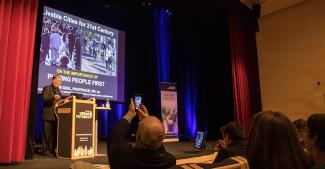
Today we know a lot of how to make great cities for people, we have a new planning paradigm – the humanistic approach. All cities are striving to be liveable, sustainable and healthy, ask any mayor and you will get the same answer. That does not mean they are doing it though.
Journey around the world
Gehl Architects has worked in almost any country you can imagine. In an informal chat before the lecture Jan Gehl hints that Moscow is the most interesting city he has worked with but wouldn’t say why. “You will find out in the lecture”, he says with a smile.
Before the audience ends up in Moscow he takes us on a journey around the world. From the pioneer Melbourne who started in 1985 to make a liveable and walkable city with widened sidewalks to a quick stop in Sydney. Broadway in New York is perhaps one of the more well-known examples. In 2007 Mayor Bloomberg stated that he wanted to make New York the most sustainable city in the world. After visiting Copenhagen where everyone bicycled around Jan managed to sell the idea to remove all traffic from Broadway and to transform Times Square from a fantastic traffic congestion to a square worthy of its name.
In 2012 Moscow wanted to humanise the city, but the architect was completely shocked. Was freedom from communism the right to park anywhere? he ironically asks. There where advertisements and cars everywhere. The telling images of the transformation shows a city that now has reclaimed the river front, made the metro stations accessible and built a square with swings.
We finish our journey in Copenhagen, the city Jan Gehl has lived and worked in throughout his career. In 1962 the city took away cars form Strøget, there was resistance that it would affect the shops, but anyone who has walked along the busy street knows this is far from reality. In 2014 the car free streets have spread throughout the city. The vision “A Metropolis for people” adopted in 2009 is seen all over the city with car free squares, continuous sidewalks, activity parks and bicycles everywhere, Jan Gehl’s mantra Cities for people is a reality in Copenhagen. There has been a close relationship between the city and the university. Universities can change the world if we work hard, Jan says with conviction.
But what about new cities?
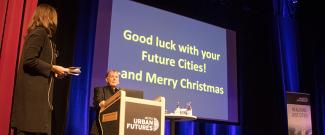
Gehl Architects is frequently hired to make existing cities better, but what about the new cities? Have they learned from mistakes by others? Modernism is influencing the planners as they still hang over their models, as if the sheer number of building will make up a city. Dubai and Ørestad in Copenhagen are two examples mentioned. Form must follow fashion - the architect clearly states.
So, what should we do with the cities for the future? Jan Gehl leaves the audience with a final message: Try putting people first in city planning, it is the most simple and cheapest thing you can do, it creates better cities for everyone and it is for cities in all parts of the world.
Read more
Event: Annual Lecture with Architect Jan Gehl 5 Dec 2018
Press invitation (In Swedish)
Find social media coverage on @MistraUrbanFut and #GehlAnnualLecture
